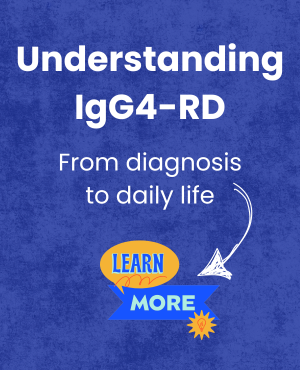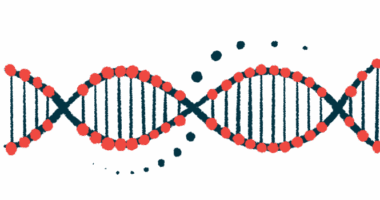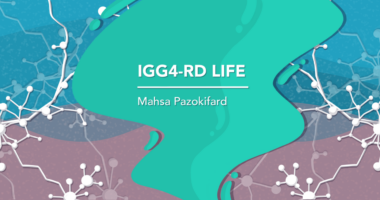Brain, eye changes are common IgG4-RD neurological problems
Scientists reviewed data that covered outcomes from 393 people

Eye problems, inflammation in the brain’s pituitary gland, and thickening of the membranes around the brain and spinal cord are the most common neurological complications seen with immunoglobulin G4-related disease (IgG4-RD), a review study reports.
Neurological problems in IgG4-RD can usually be managed with standard treatments, though researchers emphasized that more studies are needed. The review study, “Neurological manifestations of immunoglobulin G4 related disease: a systematic review of 393 cases,” was published in the Journal of Neurology, Neurosurgery and Psychiatry.
IgG4-RD is an inflammatory disorder marked by abnormal clumps of immune cells, which can form in organs throughout the body and cause a range of symptoms. In some cases, IgG4-RD causes damage to the central nervous system, that is the brain and spinal cord, and the peripheral nervous system, the networks of nerves that run outside the brain and spinal cord.
The most common neurological symptoms
IgG4-RD was only recognized as a distinct condition about 20 years ago and there remains much about the disease and its manifestations that’s still not well understood. Here, scientists in Australia reviewed the available literature to provide an overview about how IgG4-RD tends to affect the nervous system.
“To date, there are no systematic reviews available that focus primarily on the combined neurological manifestations of IgG4-RD,” the researchers wrote. “It is therefore timely that an updated systematic review is conducted to further delineate the … neurological manifestations of IgG4-RD and analyze treatment outcomes.”
The scientists reviewed data from nearly 300 papers covering outcomes from 393 people with IgG4-RD and neurological manifestations, and found that three types of neurological damage were especially common.
The most common, reported in 39.7% of cases, was hypertrophic pachymeningitis a condition wherein the membrane that surrounds the brain and spinal cord becomes inflamed and gets unusually thick as a result. Its symptoms include headache (50%), blurred vision (18.6%), double vision (13.5%), and seizures (13.5%).
The second most common neurological manifestation, reported in 38.7% of cases, was IgG4-related orbital disease, which refers to inflammation in and around the eyes. Its most common symptoms were vision loss (49.3%), headache (38.8%), double vision (34.2%), and bulging eyes (20.4%).
In 18.3% of cases, the third most common neurological problem was inflammation in the pituitary gland, called hypophysitis. The gland is a small structure in the brain that helps regulate various hormones in the body. Its symptoms were headache (48.6%), reduced pituitary gland function (47.2%), and diabetes insipidus (36.1%), which is marked by excessive urination and thirst due to fluid imbalances. About a third of patients with hypophysitis had vision problems due to an inflamed pituitary putting pressure on nearby brain structures that help control sight.
Other neurological manifestations were also reported, but were less common. For example, less than 5% of patients had peripheral neuropathy, or damage to the peripheral nerves.
Diagnosing IgG4-RD with neurological manifestations
A diagnosis of IgG4-RD in patients with neurological involvement usually involved imaging of the nervous system, most commonly through MRI scans, followed by biopsies of the affected tissues to look for disease-defining clumps of immune cells.
More than 60% of the IgG4-RD patients with nervous system involvement had symptoms that affected other parts of the body, such as lung disease, lymph node swelling, or enlarged salivary glands.
Most (91%) were initially treated with glucocorticoids, the standard first-line therapy for IgG4-RD. Other immunosuppressive therapies, such as rituximab, were sometimes used as a first-line treatment along with or instead of glucocorticoids, or as a second-line treatment when glucocorticoids didn’t control the disease.
Overall, 90.2% patients with enough follow-up data saw clinical improvements. Only about 1 in 5 patients with enough follow-up data had a relapse, which refers to symptoms worsening or recurring. In most cases, relapses occurred within the first year.
“The majority of patients were managed with [glucocorticoids] first-line, with favourable response rates,” the researchers wrote.
Fourteen deaths were reported, with seven judged to be directly related to IgG4-RD neurological complications. Another four deaths were caused by serious infections while on immunosuppressive therapies. The remaining three weren’t related to IgG4-RD or its treatment. No statistically significant predictors of death or relapse were identified.
“IgG4-RD can affect both the central and peripheral nervous system, with hypertrophic pachymeningitis, orbital disease and hypophysitis being the most common neurological manifestations,” wrote the researchers, who said that more fact-finding about how IgG4-RD affects the nervous system is needed, along with how best to manage patients. International registries may be a good mechanism to collect more data, they said.







